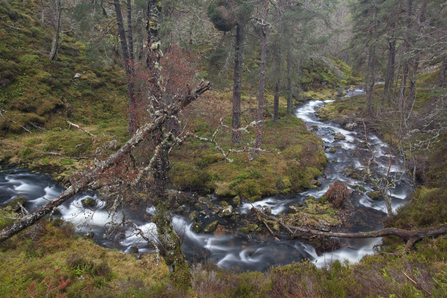Wander along a riverbank today and you’ll catch these wonderful habitats coming into their best; marsh marigolds bursting into flower, delicate damselflies flitting along the margins, shy waterbirds peering out from the vegetation. From babbling brooks to expansive estuaries, our rivers appear to be lush, thriving wildlife habitats.
Yet this springtime snapshot hides a troubling picture. In winter, downpours wash farmland soils, agricultural chemicals, and urban pollutants into our watercourses. High flows erode riverbanks and threaten homes. In summer, the lack of rainfall to replenish our waterways lays bare how much we extract to supply homes and businesses, leaving some rivers running dry. Phosphates, (invisible chemicals from wastewater discharges and fertiliser runoff), favour the growth of algae, ousting aquatic plants and the insects and fish that rely on them. Non-native plants, animals and pathogens add to their problems, invading new areas as our climate shifts.
So despite their current halcyon appearance, our rivers, lakes and wetlands are struggling.
Globally, freshwater species are declining more rapidly than any other group, because of the pressures of climate change combined with the demands we place on our freshwater environment.
We expect it to provide us with drinking water, take away wastewater, and not flood our communities, yet we continually fail to manage it sustainably, eroding the benefits our environment could provide.
Environment Agency data confirms this. Targets are in place to put rivers, lakes, estuaries, coastal waters, and the groundwaters that support them into ‘Good Status’ - a near-natural state, where they can continue to provide the things we need as a society whilst also supporting wildlife; their use would be sustainable. Shockingly only 16% of England’s waters achieve this standard.1
New River Basin Management Plans are being developed to set out how we can change this – but to turn around the fate of our waters, we need them to be bold.
- Previous plans focussed on the state of larger waterbodies like rivers, but freshwater wildlife also relies on flushes, ponds, small lakes, fens, reedbeds, wet woodlands and other wetland habitats. We want to see targets in Government’s new Nature Strategy to drive action for our forgotten freshwater habitats, which River Basin plans must help us to meet.
- The Wildlife Trusts believe that across the UK at least 30% of land must be managed for nature in order to tackle the biodiversity crisis. We want to see guidance explaining that freshwater and wetland habitats must form a key part of a national ‘Nature Recovery Network’, informed by planning & prioritisation at a catchment scale.
[1] “Only 16% of England’s groundwater, rivers, lakes, estuaries and seas are close to their natural state” - River basin planning: Challenges and Choices consultation Environment Agency 2019.


